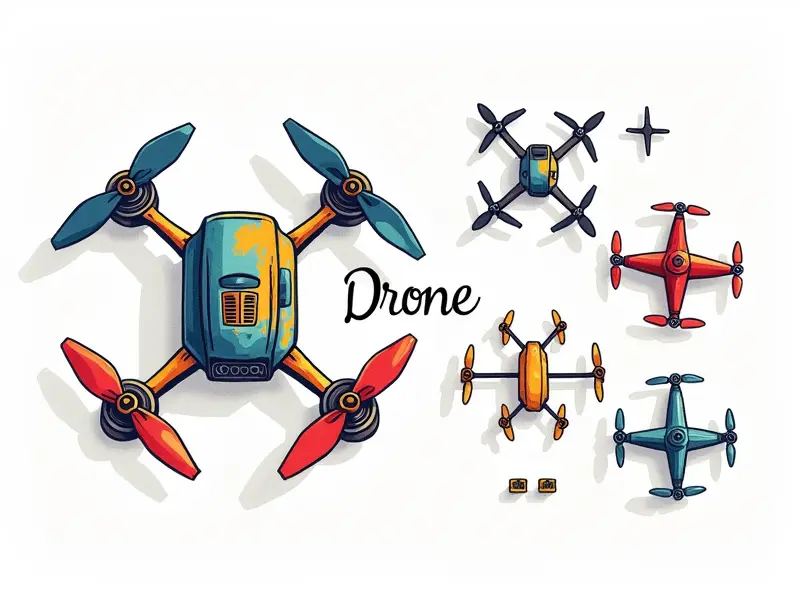FPV camera types compared?

Best FPV Cameras for Drones Compared
First-person view (FPV) technology has revolutionized the world of drones and aerial photography. At the heart of this exciting hobby lies the FPV camera, which provides a live video feed to the pilot's goggles or monitor. Choosing the right FPV camera is crucial for achieving optimal performance in various drone applications such as racing, filming, and inspection.
Ultimate FPV Camera Comparison Chart
The following chart summarizes key features of popular FPV cameras:
- Model:
- RunCam QuickSplit 3
- TBS Unify Pro X
- Holybro Osprey
- Air Unit 2.0
- Type:
- Splitter Camera
- Multiband Camera
- HD Camera
- 4K Camera
- Resolution:
- 720p/1080p
- 720p/1080p
- 1080p
- 4K
- Field of View:
- 135°-170°
- 120°-160°
- 120°
- 90°
- Battery:
- 3.7V LiPo
- 5V USB
- 5V USB
- 5V USB
- Weight:
- 12g
- 30g
- 47g
- 68g
Must-Know FPV Camera Specs & Features
When selecting an FPV camera, consider the following specifications:
- Resolution: Higher resolution provides clearer images but may increase latency.
- Field of View (FOV): A wider FOV is beneficial for racing and obstacle avoidance.
- Battery Type: Ensure compatibility with your drone's power system.
- Weight: Lighter cameras are preferable for maintaining optimal flight performance.
- Latency: Lower latency ensures a smoother and more responsive video feed.
Pros and Cons of Popular FPV Cameras
Here's a breakdown of the advantages and disadvantages of some leading models:
RunCam QuickSplit 3
- Pros:
- Lightweight at only 12g.
- Supports both 720p and 1080p resolutions.
- Wide FOV up to 170°.
- Low latency for responsive video feed.
- Cons:
- Limited power options (3.7V LiPo).
- No built-in DVR or recording capabilities.
TBS Unify Pro X
- Pros:
- Multiband support for better signal quality.
- 5V USB power compatibility.
- Wide FOV up to 160°.
- Built-in DVR with SD card slot.
- Cons:
- Slightly heavier at 30g.
- Pricier than some alternatives.
Best Budget FPV Cameras for Racing
If you're looking to get into drone racing on a budget, consider these affordable options:
- RunCam Split 2: A reliable and lightweight option with good FOV.
- Holybro Osprey: Offers HD resolution at an attractive price point.
Compare Leading FPV Camera Models
The following table provides a detailed comparison of leading models based on various criteria:
| Model | Type | Resolution | FOV | Battery Type | Weight (g) | Price ($) |
|---|---|---|---|---|---|---|
| RunCam QuickSplit 3 | Splitter Camera | 720p/1080p | 135°-170° | 3.7V LiPo | 12 | $49-$69 |
| TBS Unify Pro X | Multiband Camera | 720p/1080p | 120°-160° | 5V USB | 30 | $99-$149 |
| Holybro Osprey | HD Camera | 1080p | 120° | 5V USB | 47 | $69-$89 |
| Air Unit 2.0 | 4K Camera | 4K | 105° | 5V USB | 68 | $199-$249 |
FPV Camera Installation Tips
Proper installation is crucial for optimal performance:
- Mounting Position: Ensure the camera has a clear view and minimal obstruction.
- Cable Management: Keep cables organized to prevent interference with flight controls.
- Battery Compatibility: Verify that your chosen power source is compatible with the camera's requirements.
Conclusion
Selecting the right FPV camera for your drone depends on your specific needs and budget. Consider factors such as resolution, FOV, weight, and latency to find the best fit for your flying style. Whether you're into racing or just enjoying aerial views, there's an FPV camera out there that will enhance your experience.

